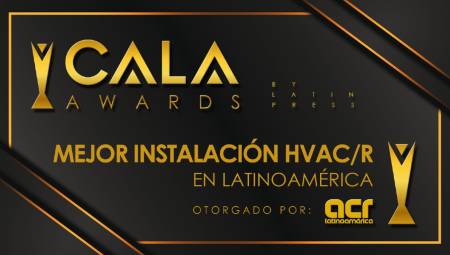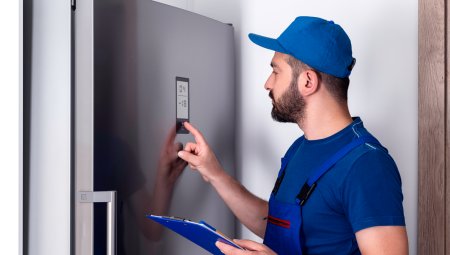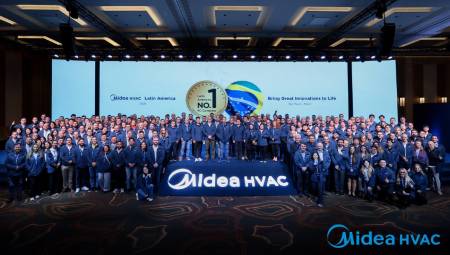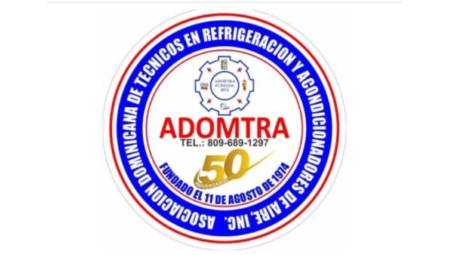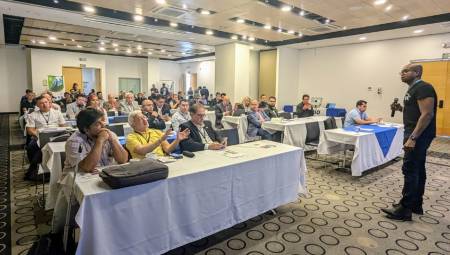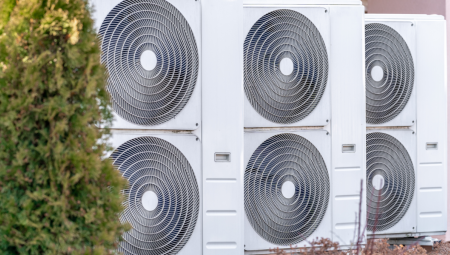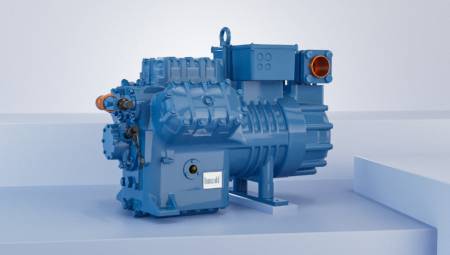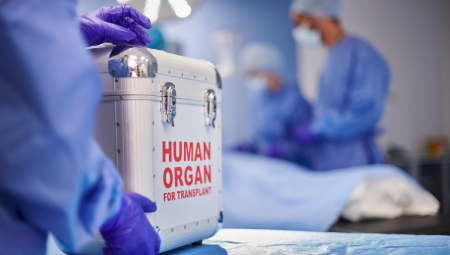 Nidenor S.A shares with the readers of ACR LATINOAMÉRICA a success story in the installation of freezing chambers in Paraguay in which equipment from several manufacturers, including Mipal, was used.
Nidenor S.A shares with the readers of ACR LATINOAMÉRICA a success story in the installation of freezing chambers in Paraguay in which equipment from several manufacturers, including Mipal, was used.By: Eng. Daniel Camps*
There are many details behind the installation of an industrial refrigeration solution. The following are part of a work of refrigeration chambers for Trociuk y Cía A.G.I.S.A, a company with a long history in the Paraguayan industry based in Fram, Itapúa.
Background
Nidenor S.A., the company that carried out the installation of the equipment, works in the industrial refrigeration sector and its operations are based in Uruguay and Paraguay. Its history in the sector dates back more than half a century.
In the last decade he joined Mipal Industria de Evaporadores Ltda, which has provided evaporators for various applications among which are:
- Frimacar S.A. (air conditioning of packaging of beef cuts and access to carton freezer).
- UPISA (tunnels for freezing beef cuts in pig boxes and carcasses, freezing tank and air conditioning of quartering, desosing, packing and loading rooms).
- Claldy S.A. (cheese maturation and expedition chambers).
- Ontilcor S.A. (air conditioning of access to carton freezers, desosado, packaging, quarter and corridors, and maturation chambers of vaccine carcasses).
- The last of them Trociuk and Cia A.G.I.S.A., a work that was only delivered the first week of June and that includes orange juice freezing chambers and antechamber air conditioning.
This list gives an account of the diversity of applications and illustrates the versatility of the products, which include evaporators of the EViA and EViB series with aluminum tubes and fins and large air flows, evaporators and dehumidifiers of the HD/G2 and HDL/G2 series with aluminum tubes and fins for ammonia or, with copper tubes and aluminum fins for secondary coolant (ice water or glycol solution).
Aspects of relevance
Some of the relevant characteristics of the products from the point of view of an installer, are their careful construction with all the elements for the mechanical and electrical connection to the system, including the metal supports and their low weight that allows them to be supported without demanding heavy structures.
For the designer, the possibility of combining air flows and configurations of tubes and fins with refrigerant circuits calculated to suit the application, are essential elements for the application solution. In fact, little attention is usually paid to the selection of evaporators when in fact they are the most important elements in the design of a refrigeration system, while in them the exchange of heat with the environment and through it, with the product to be cooled, is carried out.
The example considered here combines the use of large surface, flow and range evaporators with dehumidifiers of smaller surface and low air flow where the hot gas is condensed in a sector of tubes and then evaporated in the rest of the battery. We refer to the refrigeration system for freezing orange juice concentrated in Trociuk and Cia A.G.I.S.A., whose owner Andrés Trociuk was kind enough to authorize its publication.
The project of this plant was in charge of Dr. Eugenio Ibars de Trociuk y Cía. A.G.I.S.A., who has counted for its development with the assistance of Eng. Daniel Enciso (civil works) and David Krivenchuk (electromechanical installations).
The cooling requirements for this application are those referred to in the following tables:
Freezing chamber N°1
Chamber temperature : -22ºC
Camera dimensions : 15,15m x 6,40m x 6,50m
Daily product movement : 20 tons
Retention time : 96 hours
Product inlet temperature : -5ºC
Chamber capacity 8 tanks x 24,000 kg : 192,000 kg
Freezing chamber N°2
Chamber temperature : -10ºC
Camera dimensions : 15,15m x 6,40m x 6,50m
Daily product movement : 20 tons
Retention time : 24 hours
Product inlet temperature : -5ºC
Chamber capacity 1,020 drums x 260 kg : 265,200 kg
Freezing chamber N°3
Chamber temperature : -22ºC
Camera dimensions : 15,15m x 12,80m x 6,50m
Daily product movement : 20 tons
Retention time : 48 hours
Product inlet temperature : -5ºC
Chamber capacity 2,040 drums x 260 kg : 530,400 kg
Antechamber
Antechamber temperature : 0ºC
Antechamber dimensions : 25,30m x 4,96m x 6,50m
Antechamber capacity 640 drums x 260 kg : 166,400 kg
Equipment needed for process cooling
During the juice concentration process, about 1,200 kg/h of concentrate will be obtained at 60°Bx (60% soluble solids) at 15°C, which will need to be cooled immediately to -5°C.
Solution Description
Due to the size and availability of the backrest, a central system with a Duo Pack of GEA Grasso International b.v. screw compressors and a GEA B.A.C. forced-draft evaporative condenser was chosen.
Due to the need to use a liquid separator due to the low temperature level and the ease of disposing of the refrigerant accumulated in it, as well as the distance to the evaporators, we defined that the system was recirculated by pump, selecting for its simplicity two open centrifugal units provided by Bombadur S.R.L. (one of them stand-by).
As a primary refrigerant, ammonia was preferred, due to its better thermal efficiency and behavior in central systems (not miscible with oil, does not develop acidity, etc.), not to mention that – for reasons of environmental preservation – our firm abandoned the use of HCFCs ten years ago and considers HFCs only for very small applications with hermetic units. In this regard, our main supplier of refrigeration compressors, GEA Grasso International b.v., has developed semi-hermetic compressors and liquid chillers of reduced capacities with ammonia and for the usual ranges of industrial air conditioning we use copper tube forcers and aluminum fins with ice water generated in descending film chillers provided by BUCO Wärmeaustauscher GmbH.
As a secondary coolant, we use water with 30% propylene-glycol (ethylene-glycol was not used due to use in the juice cooler) obtained and used with stainless steel exchangers supplied by Thermowave GmbH.
As for the evaporators, for this application the following were selected:
Four (04) MIPAL units model EViB-6P 71A with cabinet built in painted galvanized sheet, insulated trough and lined in the same material, galvanized steel hanging brackets, four axial fans of 800 mm in diameter coupled to three-phase motors 2.2 kW, VI poles for C.A. of 220V/380V-3-50Hz and hot gas defrosting system. External dimensions 5375mm x 1013mm x 1161mm. Weight 343 kg.
Three (03) MIPAL air dehumidifiers model HDG2-173A with cabinet built in aluminum with double trough, galvanized steel hanging brackets, three (03) axial fans of 400mm diameter coupled to three-phase motors 0.17 kW, IV poles for DC of 220V/380V-3-50Hz. External dimensions 2470mm x 640mm x 640mm. Weight 101kg.
In addition to the best exchange efficiency both for its better thermal conductivity and for the softness of the interior and exterior surface compared to those of galvanized iron, aluminum was chosen as the material for the evaporator coils due to its low weight, which allowed the evaporators to be hung from the ceiling of panels with EPS core with a minimum structure to distribute the weight.
Final results
This work lasted four months (it began in February and as previously said it was delivered the first week of June).
With regard to Mipal equipment (evaporators and dehumidifiers), Nidenor has installed around 60 and at no time has there been any problems with them.
During the installation there were no particular setbacks, except for the difficulty of having a qualified workforce in Paraguay to develop this type of project.
Previously foreign work equipment had been used, but in the installation of Trociuk and Cia A.G.I.S.A only the supervisors were not Paraguayans and the bulk of the installation group was local. There is a lack of experience in industrial refrigeration issues because there is not the same development as in Uruguay, for example.
Until June 19, tests were still being carried out with the teams, of Brazilian and Argentine origin, but we still have to wait at least a month to get an accurate feedback. During this time what the Nidenor S.A. team has done is to provide assistance to the people of Trociuk and Cia A.G.I.S.A at the moment they encounter any difficulty, since before they did not have any refrigeration system.
An aspect to highlight, due to the novelty in the installation, is the type of compressor plant used, which in fact is the first of its kind to be installed in Paraguay. This has all the characteristics of a prefabricated refrigeration group that is trying to spread in South America, precisely because of the difficulty of finding qualified labor in some places. This technology improves the work because there are more assembly facilities and for the end user it is easy to operate due to its high automation.
*Daniel Camps is a design engineer and construction manager at Nidenor S.A.


